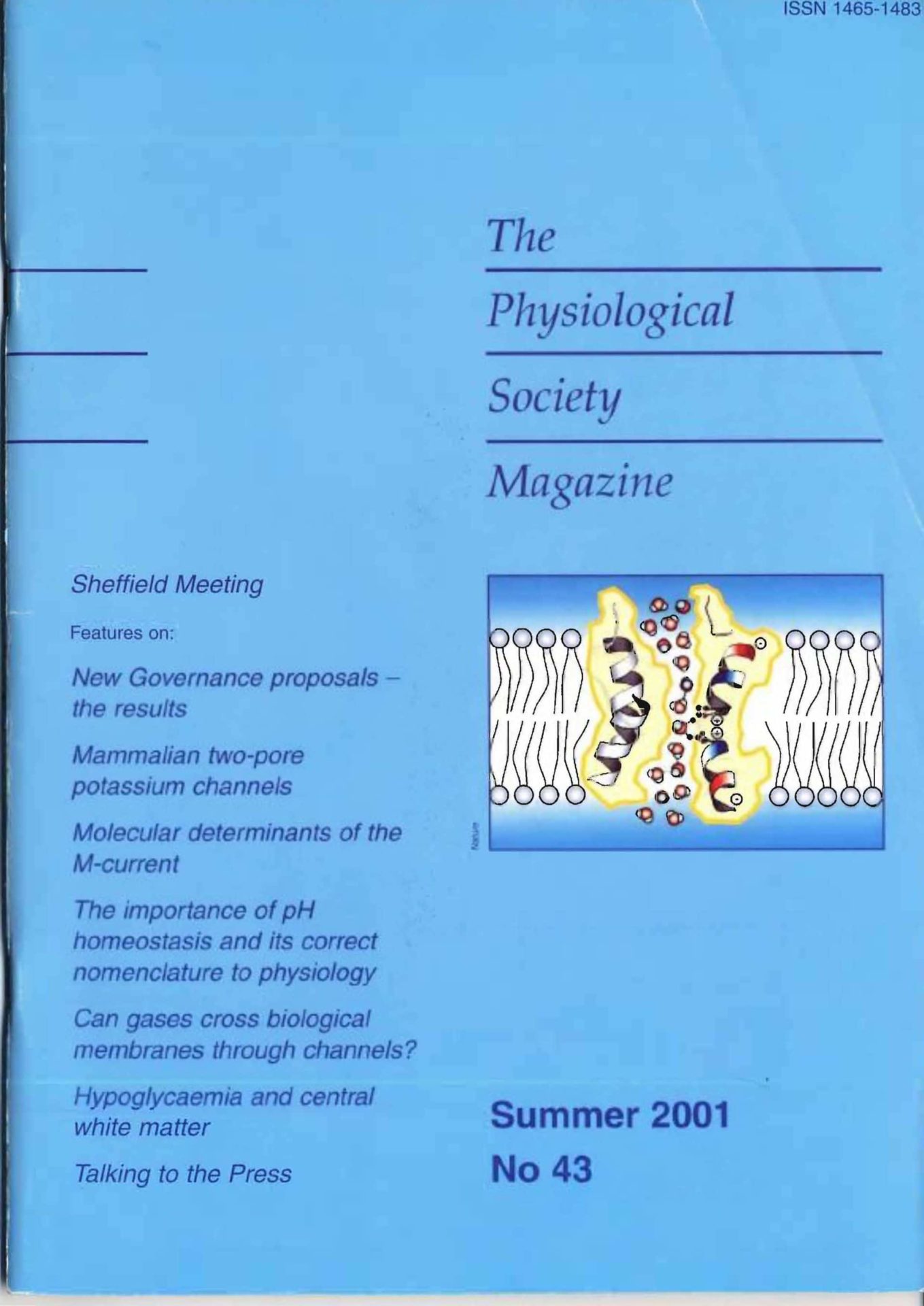
Physiology News Magazine
MAKING AN IMPRESSION
Features
MAKING AN IMPRESSION
Features
Mary Forsling
Neuroendocrine Laboratories, Guys, King’s and St Thomas’s School of Medicine
https://doi.org/10.36866/pn.43.20
Andy Warhol promised me 15 minutes of fame, and I finally received it! At an early age, my younger daughter declared a desire to be rich and famous. To avoid possible disappointment, I suggested that there were different sorts of fame, pointing out that scientists and doctors achieve some degree of fame through the groups they teach. She was, however, adamant that fame could only be achieved through the media. So just how does that happen9
It is always gratifying when one’s abstract is accepted for a scientific meeting, and so I was pleased when my work was selected as an oral communication for last November’s meeting of the Endocrinology Society. My research centres on modulation of pituitary hormone release by melatonin and gonadal steroids, and I have shown that melatonin and its precursor serotonin influence vasopressin release. My abstract at the meeting concerned 3.4methylenedioxymethamphetamine (MOMA or “ecstacy”), which is believed to act via serotonin. By chance, I. learnt that MOMA could produce water retention, and that this might have led to some of the high profile deaths that have been reported. This hyponatraemia could have resulted from inappropriate vasopressin secretion. Consequently, collaborated with colleagues from King’s College and Imperial College on a pharmacokinetic study centred on MOMA.
We did, indeed, find that MOMA stimulated vasopressin release. Surprisingly, however, during the first couple of hours of the study, plasma vasopressin inversely correlated with MOMA. This might have resulted from the formation of an active metabolite, and the reduced MOMA being associated with greater formation of the metabolite and enhanced vasopressin release. MOMA can be metabolised by two pathways and, with the Drug Control Centre at King’s College and the Department of Pharmacy, I looked at the effect of the major metabolite 4-hydroxy-3-methoxymethamphetamine (HMMA) on the neurohypophysial hormone release from rat hypothalamic explants in vitro. We found that both MOMA and HMMA stimulated vasopressin release, HMMA being the more potent. It was this work that formed the basis of my abstract.
Pleasure at the acceptance of my abstract was followed by great surprise when the Endocrinology Society asked me if the results could be included in the meeting’s press release – I would be asked to approve the wording. J agreed. T have long been concerned that children acquire much information that they never revisit, and are kept largely ignorant of the way their body functions.
Apprehension only began to kick in when the Society rang with the dates of the press release and to confirm that I would be available to talk to journalists. Oh why hadn’t I taken that course on working with the media? But then, as later, the staff from the Society were very reassuring. All calls would go to the Society, and l would never have to give an interview immediately if I felt unprepared. I should also avoid giving personal views on the use of “ecstacy”. Their main advice was to give two or three main points and a take home message.
I put the phone down and worked on the problem. Summarising my work would be relatively easy. The message should be that, while it is important to maintain hydration after taking “ecstacy”, one should not over do it. This was particularly important for young women, as women of reproductive age are much more likely to suffer serious side effects on developing low plasma sodium.
Nothing was to appear in the press before my presentation at the meeting, but the preceding week was a fluny of activity, with calls from New Scientist and The Times, Independent and Telegraph, as well as the Medical Channel (Sky TV’s channel for doctors). All the journalists were well informed and helpful. On hearing it was my first interview, Andy Coghlan from New Scientist offered to send me a copy of the piece for comment. My confidence grew, and the pieces that appeared gave a fair summary of the topic. other workers in the field had obviously been consulted so that the reports were well balanced and, furthermore, l was not misquoted.
Rachel Lawson from Radio I interviewed me at the meeting. She immediately put me at ease. We had to go over and adjust the questions beforehand, and I checked how I should pitch my responses. Any sections that I was not happy with were redone. Rachel finally left to interview some “ecstacy” users. I was impressed with the way the information was presented in the resultant broadcast. Interviews for Radio 5, German TV, Austrian radio and London Metro followed.
The excitement abated, though emails still trickle in from across the globe. Was this all worthwhile, or just “hype”? While I was apprehensive at first, I found the experience generally enjoyable. It is hard to say how much impact the message made, but l hope I contributed to the demystification of things medical and scientific. My elder daughter, who only heard the headlines on Radio 1 and so was unaware of my contribution, had discussed the topic with her friends at University. Queries have come f om those working on the problem of drugs, both in charities and the police. Hyponatraemia following MOMA ingestion may not be a major problem, but if one person is helped, it will have been worthwhile.
